Sensual, inventive and captivating, Tahitian dance is an unforgettable spectacle that can only be appreciated fully in The Islands of Tahiti. It’s a dance that expresses itself in movement and music, but also in the magnificent costumes of the dancers. The creation of these costumes is an art form in its own right.
Dance is a part of Tahitian culture that has been passed down through the ages. Known as ‘ori tahiti, it is all mouvement and grace, but it is also an art form and a way of telling a story. Its popularity increased with the arrival of tourism and the spreading of Tahitian culture throughout the world. But for many years, it was banned in French Polynesia. The Christian missionaries considered the music, costumes and above all, the suggestive movements and gestures, too sensual, too exciting, and too colorful. But the dances were nevertheless transmitted from generation to generation and eventually, the ‘ori tahiti regained its place as the leading display of authentic Tahitian culture. Today, you can watch dance spectacles everywhere in The Islands of Tahiti, and many hotels put on evening performances. You can even attend dance classes in many of the islands to learn the sensual movements.
The history of Tahitian dance costumes
The costumes of the dancers are an important part of a traditional Tahitian dance spectacle. They are linked to the story of the dance and help the audience understand the theme of the spectacle. When Christian missionaries arrived in The Islands of Tahiti at the beginning of the 19th century, they decided to ban dancing. From 1820 it was completely forbidden for 130 years. Fortunately, in the 1950s, the tradition was revived under the impetus of Madeleine Moua, a descendant of the Tahitian royal family, and then Gilles Hollande, one of her disciples, continued its rehabillitation. The most important event in the the Tahitian cultural calendar is the Heiva i Tahiti festival. A month long celebration of traditional music and dance that bears the name of the original dance group formed by Madeleine in 1956.
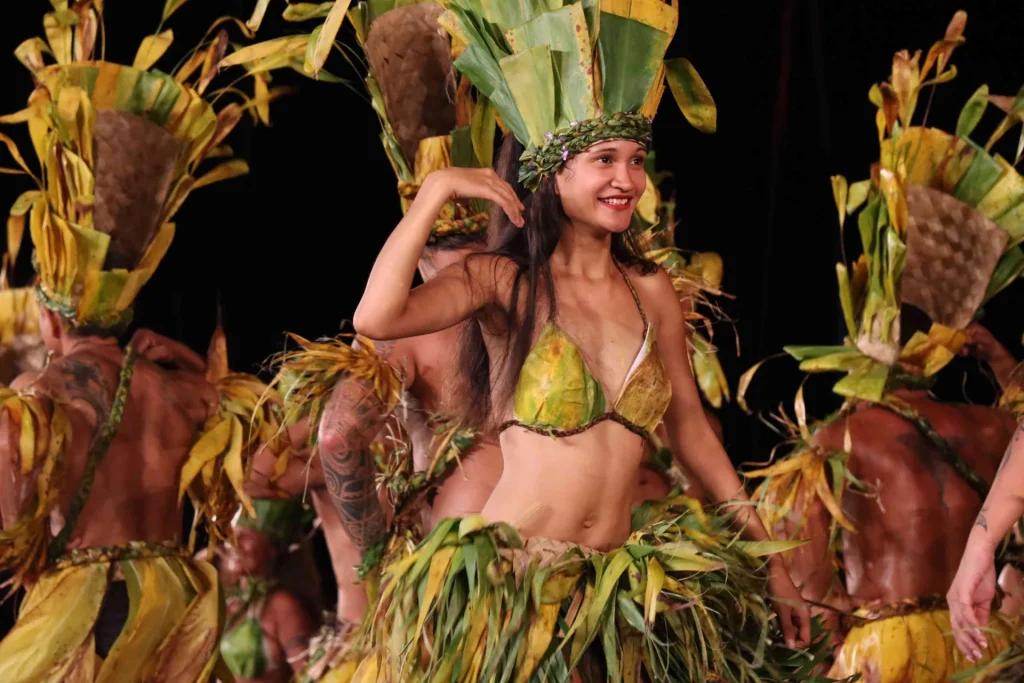
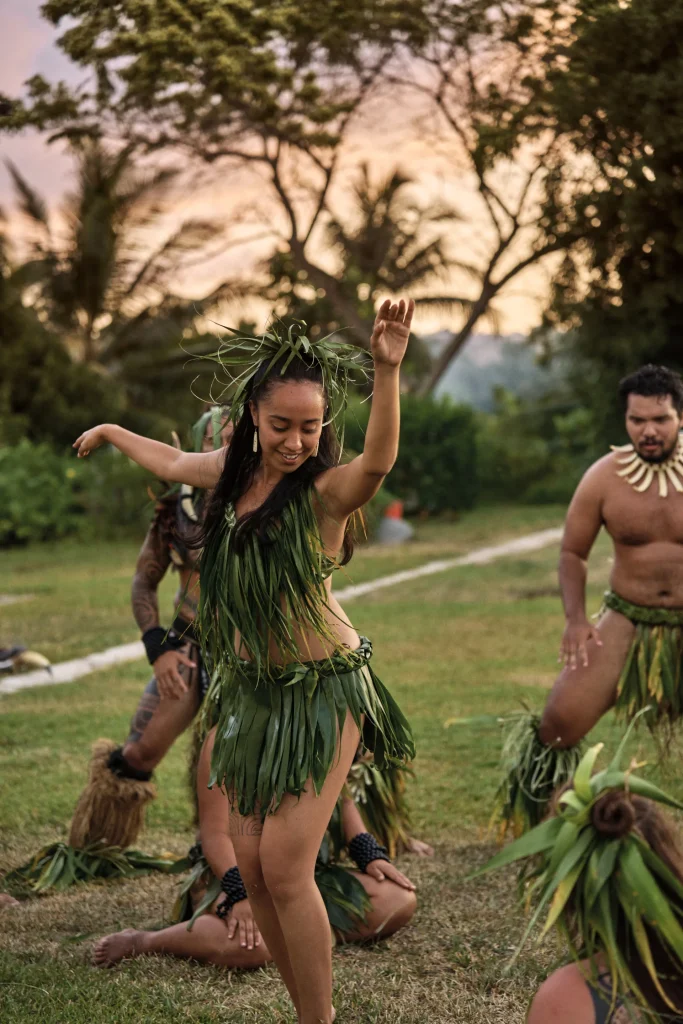
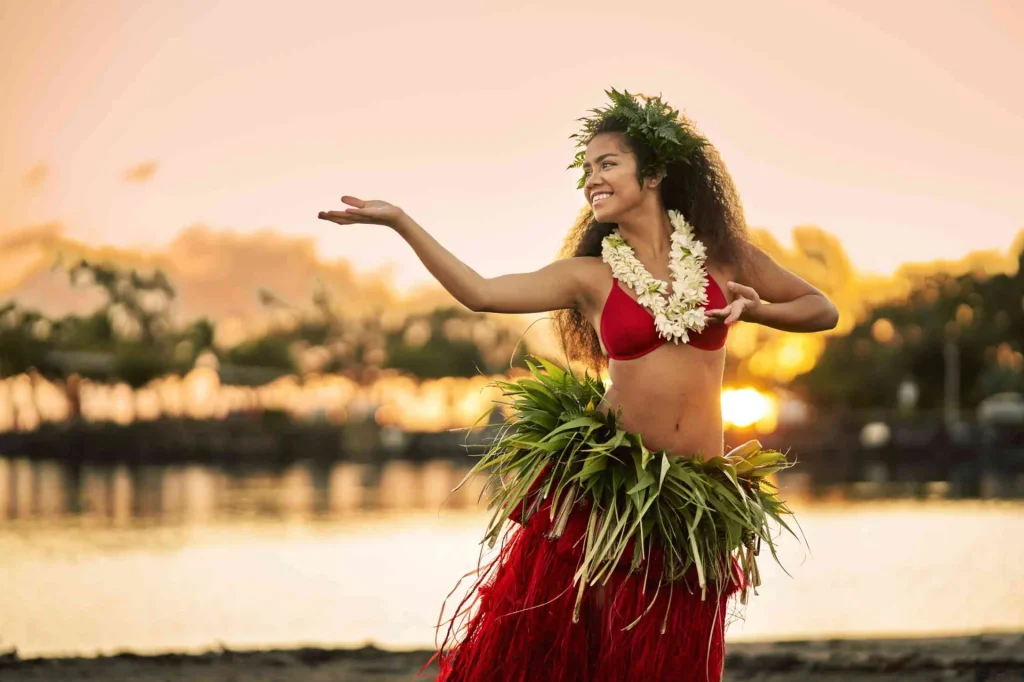
Traditionally, the costumes and headpieces of the dancers are made of vegetable fibre, flowers, seashells and feathers, with bras made from half coconut shells or from pipiti’o (shiny little red seeds) and tapa cloth. Marquesan dancers wear grass skirts and costumes made from tapa cloth. The necklaces, crowns and bracelets worn by the dancers reflect their origins. The costumes are a tribute to the luxuriant natural environment of French Polynesia. Today, the Hura Tau (experienced dancers) and Hura Ava Tua (beginners) in the famous Heiva i Tahiti, honor the memory of the two visionaries who rehabilitated the ‘ori tahiti and its magnificent costumes after more than a century in the shadows. The winners of the Hura Tau competition receive the ‘Madeleine Moua’ award and the Hura Ava Tau prize is named after Gilles Hollande.
The dances and the costumes
There are four main styles of dance: ‘ōte’a, ‘aparima, hivināu and pā’ō’ā. The ōte’a is considered to be the most tradional and is the most popular dance. Once reserved only for men, the ōte’a is now danced by everybody. It is a dance with very rapid hip mouvements but slow and graceful arm gestures. it is accompanied by the rapid, rythmic beating of traditional Tahitian drums. The costumes worn for the dance are the more (pronounced: “moré” ,a kind of grass skirt) often made from pūrau (hibiscus) bark. The bark is soaked in seawater for several days to soften it, then the outer layer is stripped away and the inner fiber is beaten to make it thinner. Once dry, the fine strips are attached to the waist by a belt, also made of pūrau . The result is an off-white fiber that is sometimes tinted. For some dances, a hei upo’o headpiece of flowers, tapa cloth, or leaves is worn.
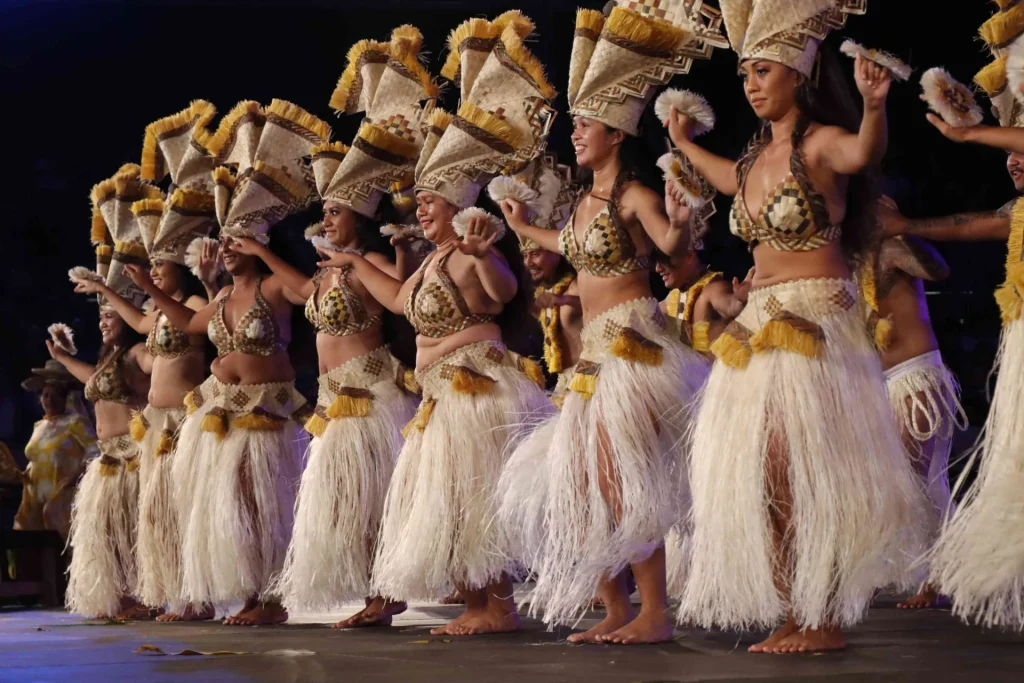
The ‘aparima is another traditional style of dance and is usually performed by a large group of dancers. It is slower and more sensual than the ‘ōte’a. The women usually wear a pāreu around the waist as a skirt and a bra of the same material. The story of this dance is a boy and girl who meet, fall in love and live happily ever after.
The hivināu is a more modern style of dance and often comes at the end of a ceremony or celebration. More imrovised the ‘aparima and ‘ōte’a, in the hivināu the principal dancer improvises his dance while a group of dancers circle around him. synchronizing their mouvements with his but in a different direction. This dance is considered to be the easiest form of Tahitian dance. The themes are generally linked with the ocean. The costumes is the traditional Tahitian dance costume, the more.
The pā’ō’ā is generally danced with the hivināu. The dancers are seated in a circle and tap their thighs and make rapid gestures with their hands and arms, while a couple dances in the middle of the circle. The stories told are usually about hunting and fishing. The costumes are traditional Tahitian dance costume, the more.
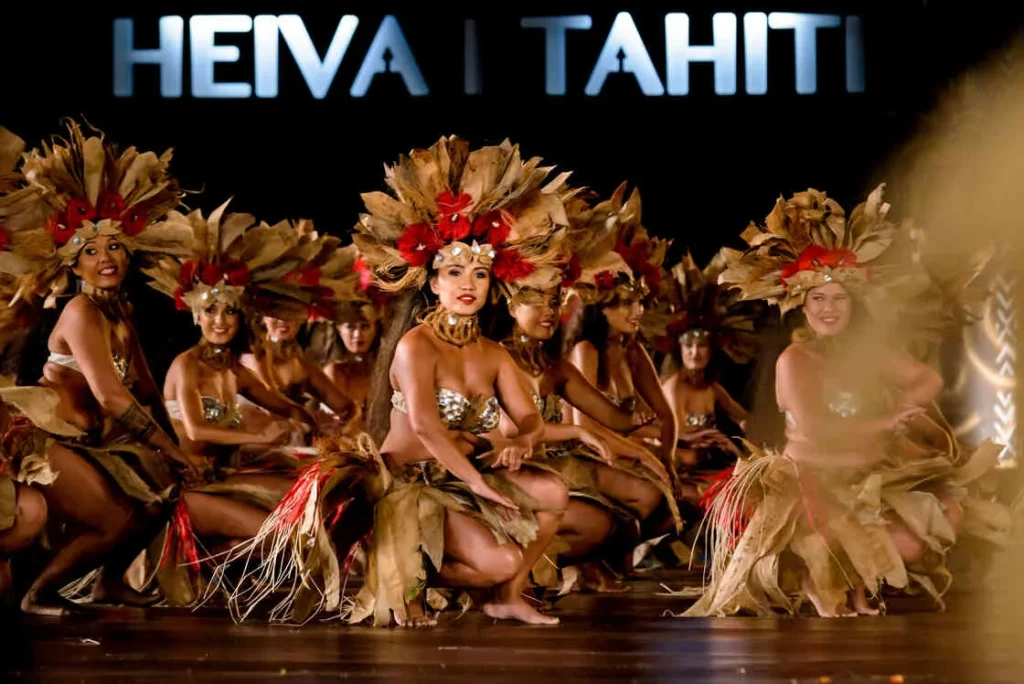
In the Marquesas Islands, the dancers also perform the haka, a war dance once used to intimidate the enemy in conflicts between two valleys. Today, the dancers usually wear a black pāreu with a pig bone necklace and strips of ‘autī leaves tied around the upper arms and calves. The dancing is accompanied by the deep, hollow breathing of the dancers, to express anger and menace.
There are other lesser-known, but equally authenitic dances, in other islands, such as the pe’i in the Gambier Islands. The word pe’i means to stamp your feet ,and the dancers wear a more skirt, and a more cape of the same length tied around the neck. The arms are stretched out and shaking, to apease the spirits, while the feet stamp to crush the defeated evil spirits.
Themes
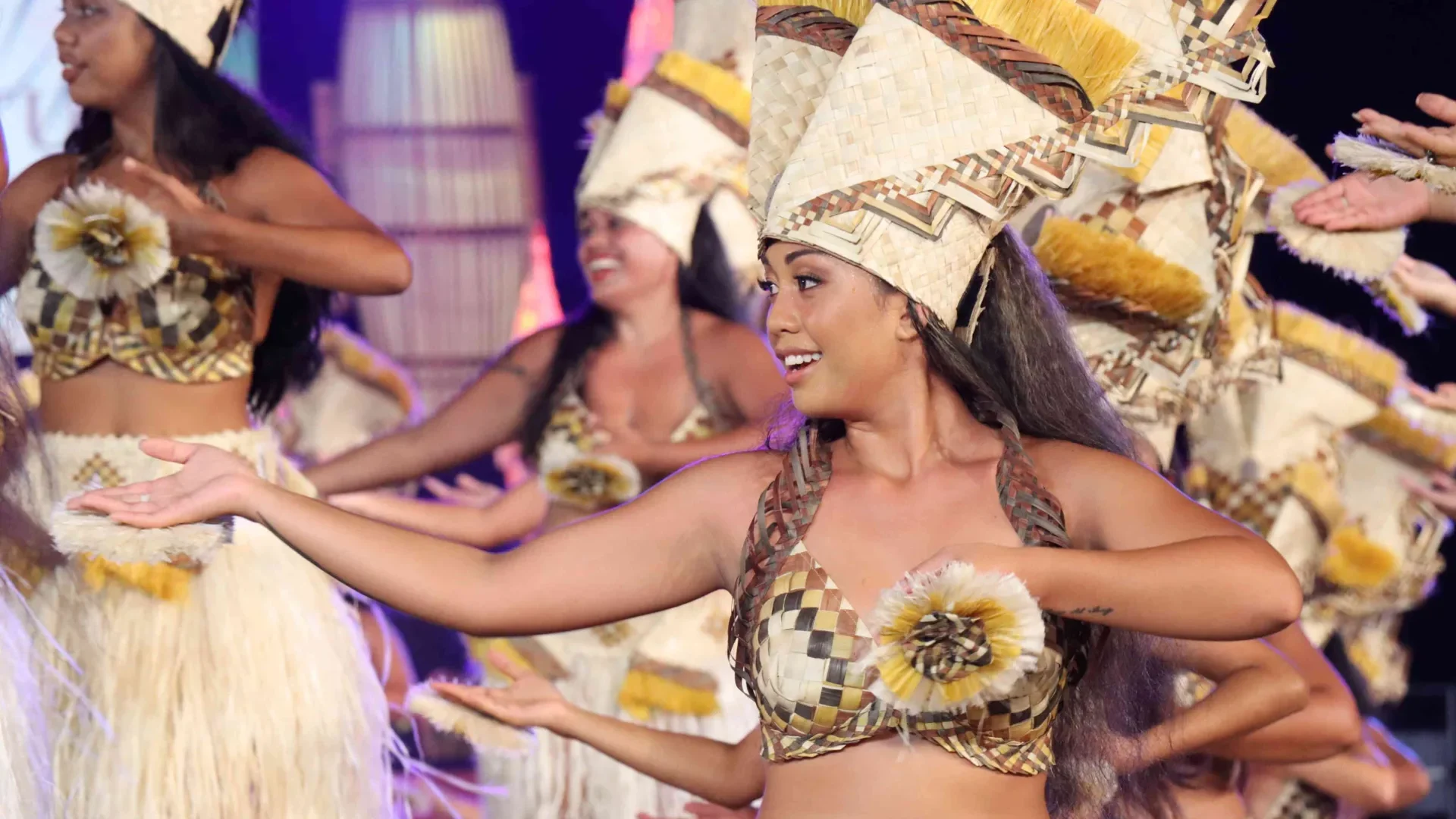
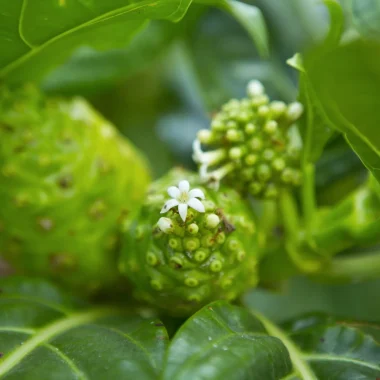
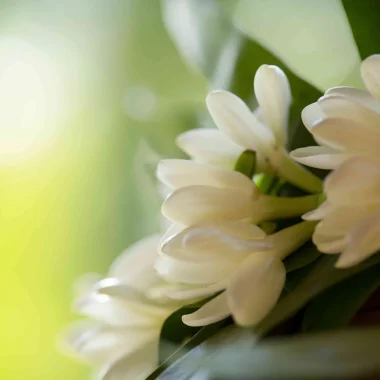
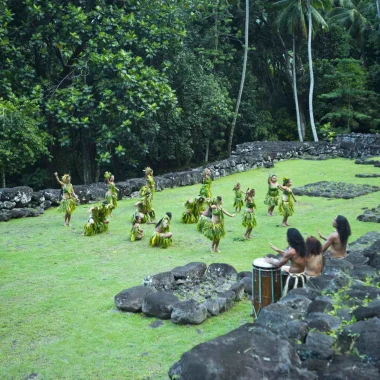
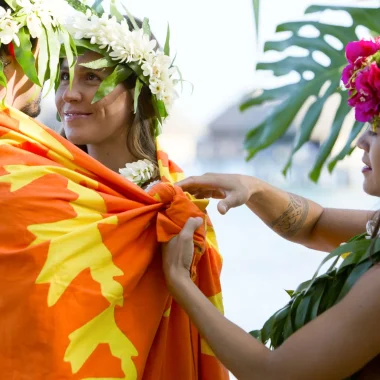

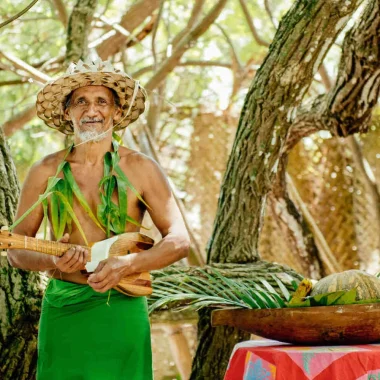
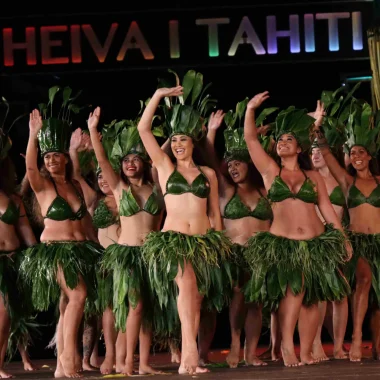
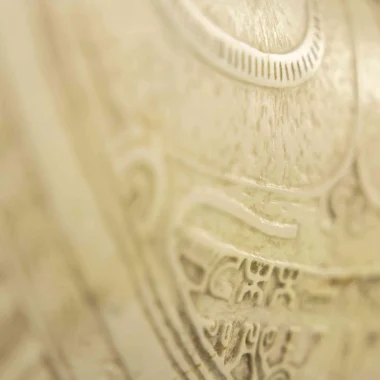
 América del Sur
América del Sur
 Australia
Australia
 Belgique
Belgique
 Brasil
Brasil
 Canada (EN)
Canada (EN)
 Canada (FR)
Canada (FR)
 Deutschland
Deutschland
 España
España
 France
France
 Italia
Italia
 Mexico
Mexico
 Polynésie française
Polynésie française
 New Zealand
New Zealand
 Schweizerisch (DE)
Schweizerisch (DE)
 Suisse (FR)
Suisse (FR)
 United Kingdom
United Kingdom
 United States
United States
 한국
한국
 中国
中国
 日本
日本